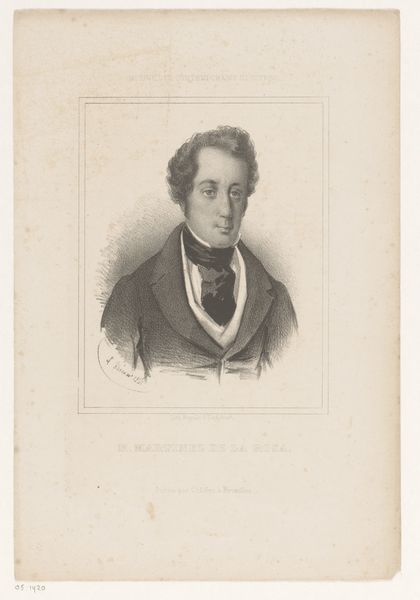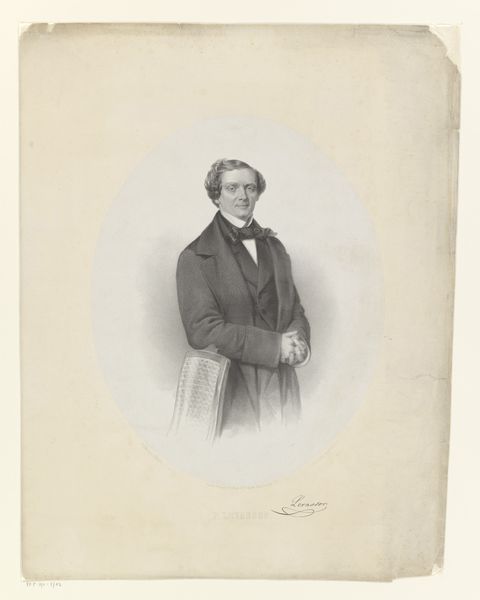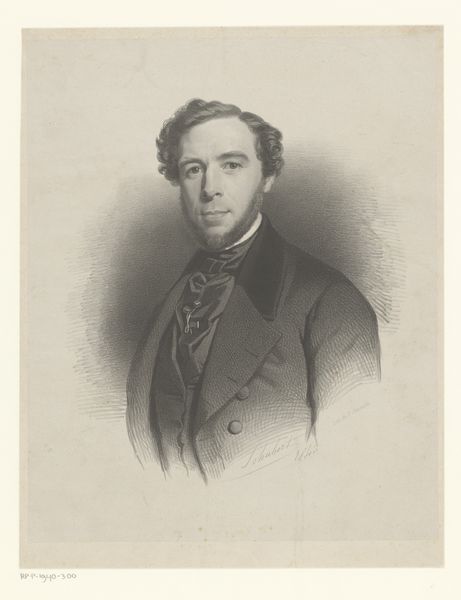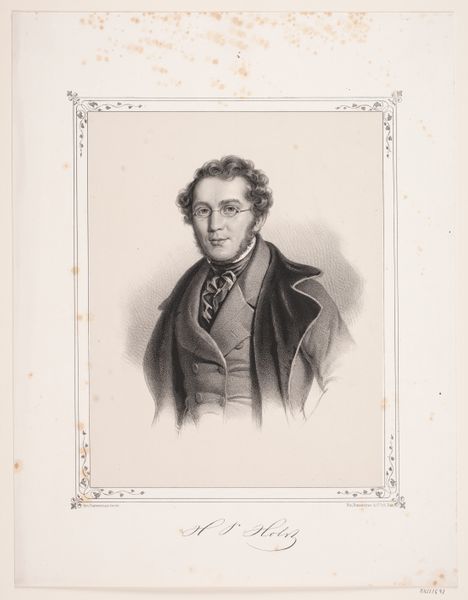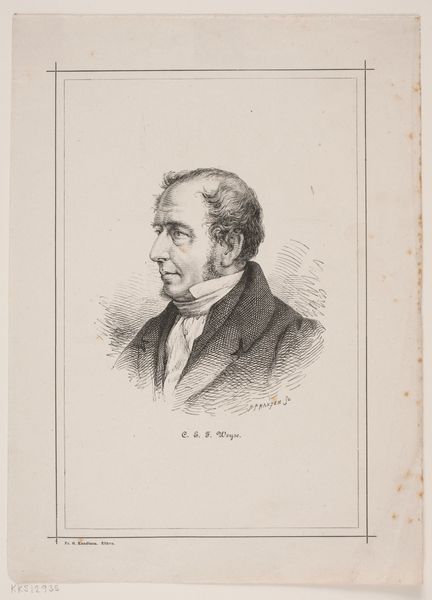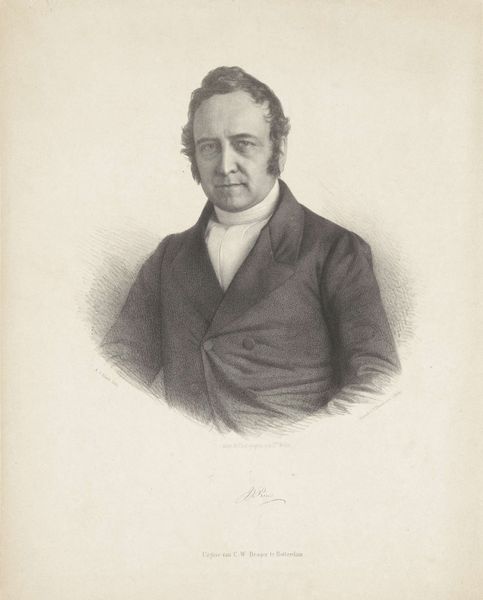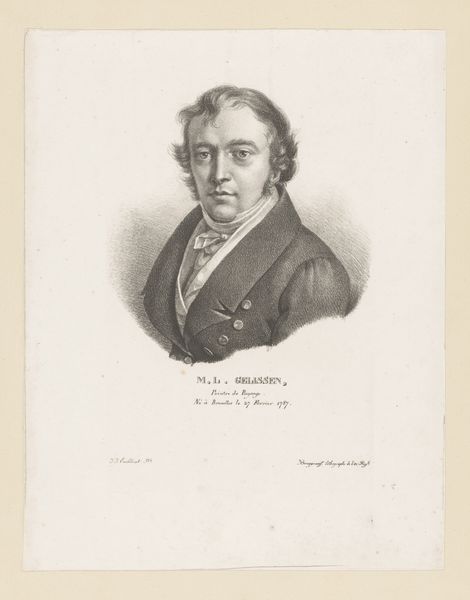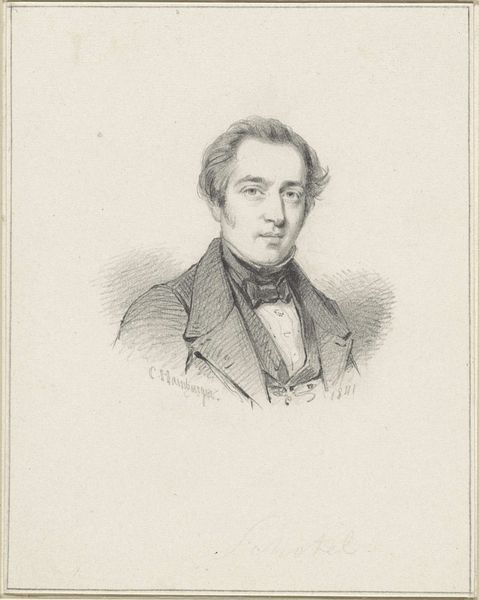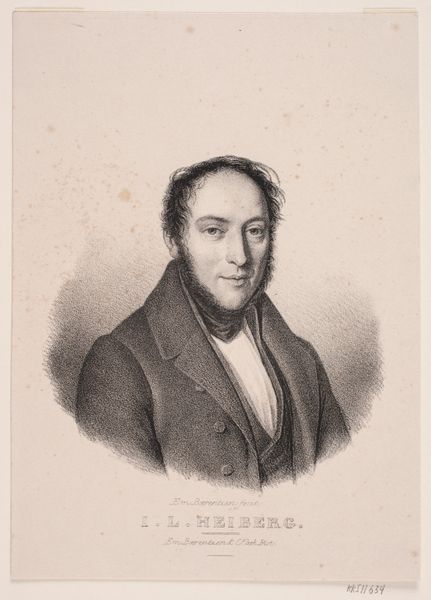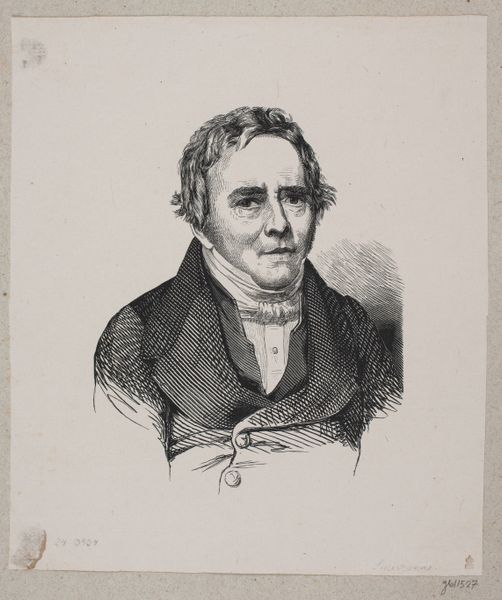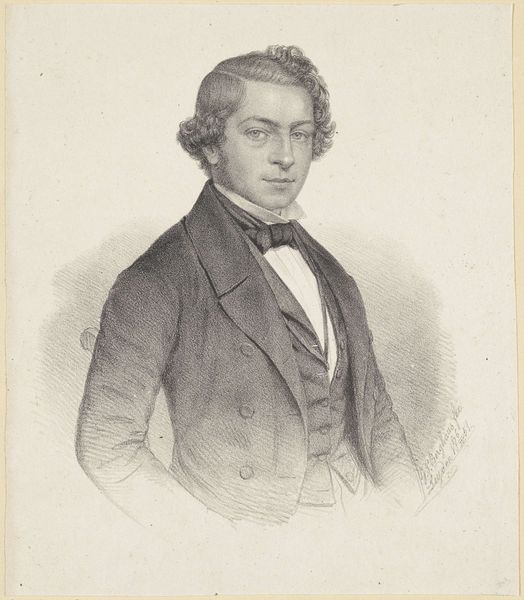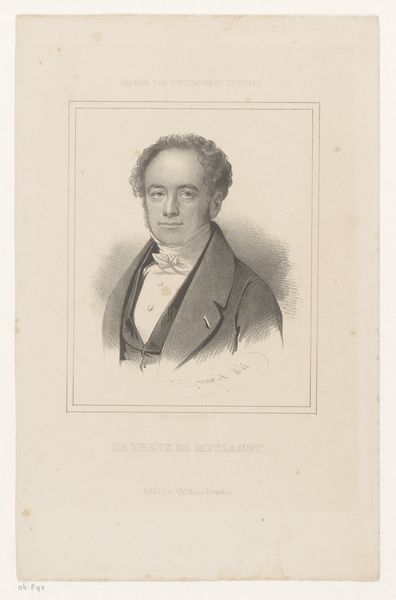
lithograph, print
#
portrait
#
lithograph
# print
#
romanticism
#
realism
Dimensions: 172 mm (height) x 110 mm (width) (bladmaal)
Editor: This lithograph print, entitled "Carl Henrik Schröder," dates back to sometime between 1813 and 1875. What strikes me most is the detailed rendering of his attire. I wonder about the lithographic process used. How was the means of production impacted by or how did it reflect the depicted sitter’s class status? Curator: Excellent observation! Considering this lithograph's probable place within the bourgeois society of its time, the use of a print – a replicable medium – signals an interesting tension. Prints offered wider access to portraiture, previously confined to painted commissions for the elite. However, the labor of creating the lithographic stone, and the resources to print and distribute it, were not universally accessible. This raises questions about who commissioned it, for what purpose, and who was likely consuming these images. Was it aimed at broader, more democratic visibility or primarily confined within Schröder's own social network? Editor: So it is both an object made possible by industrial methods and a display of status, of sorts? Do you see a contradiction in that? Curator: Not necessarily a contradiction, but rather a revealing complexity. The emerging middle class utilized industrial advancements to emulate the aristocratic practice of portraiture, seeking to solidify their own position in the social hierarchy. Notice the details – the elaborate buttoning, the fabric’s texture suggested through skillful hatching and cross-hatching on the stone. The artistry highlights craftsmanship, simultaneously elevating the sitter and legitimizing the mass-production aspect. What does this tension tell us about the values of that era? Editor: That’s a great question. I’m thinking it speaks to a negotiation between old and new, where traditional status symbols were being re-evaluated and adapted to a changing industrial landscape. I appreciate seeing how materiality reveals these complex relationships. Curator: Precisely. Examining the lithograph through its materials and production methods provides deeper insights than a purely aesthetic or biographical analysis might allow. It urges us to see art as entangled with social forces and technological transformations.
Comments
No comments
Be the first to comment and join the conversation on the ultimate creative platform.
